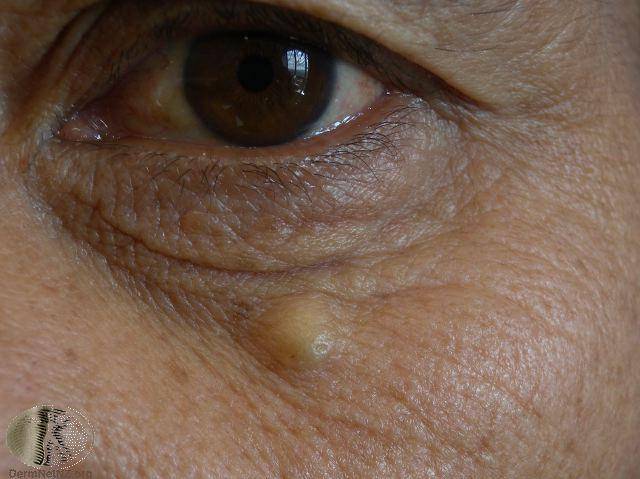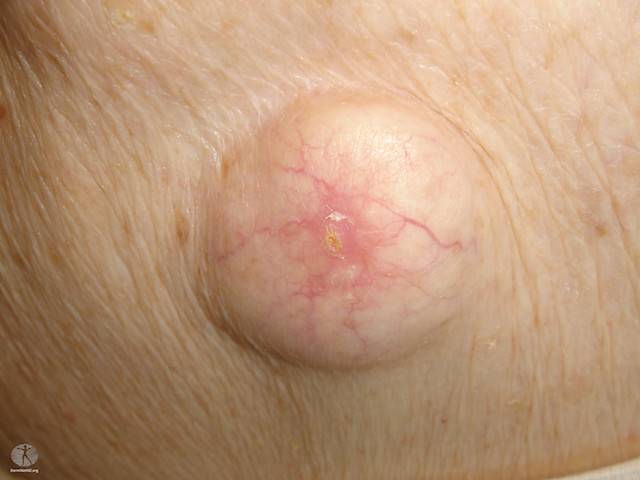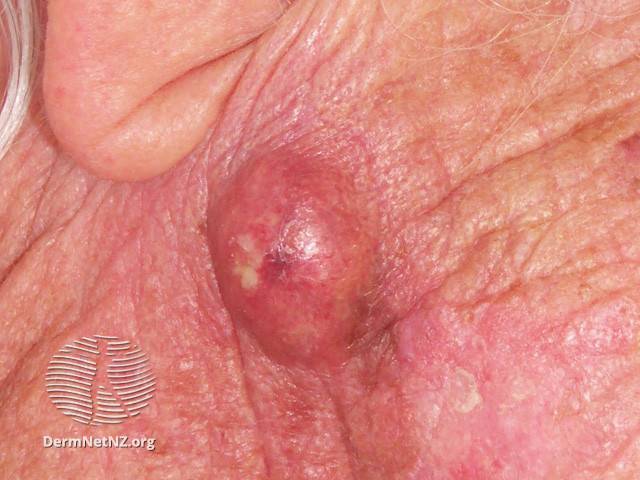Cysts
The two main common types of cyst that appear on the skin are; epidermoid cyst, and pilar cyst (also known as trichilemmal cyst), these are sometimes referred to as sebaceous cysts.
Both types of cyst are filled with keratin, the material that makes up our hair and outer layer of skin. The difference between the linings of epidermoid and pilar cysts can be seen under a microscope.
Cysts are common, benign, and not contagious.


Cysts are common, benign and not contagious

A skin examination from a Dermatologist will rule out any skin cancers

Cysts tend to grow slowly

Cysts are removed by surgery under local anaesthetic
What Causes Cysts?
Epidermoid cysts and pilar cysts are caused by a build up of keratin under the skin. Epidermoid cysts can appear after a hair follicle has been inflamed.
Who is at risk of Cysts?
Epidermoid cysts affect young and middle aged adults, and are common in patients suffering from acne. They are not hereditary, but sometimes play a part in rare conditions that are hereditary.
Pilar cysts tend to arise in middle age, and affect more women than men. They run strongly in families, as they are inherited as an autosomal dominant trait, meaning that there is a 50% chance of a child developing the condition if the parent has it.
What are the Symptoms of Cysts?
Epidermoid cysts and pilar cysts are similar in appearance. They are round, or dome shaped, and appear under the surface of the skin.
They can appear yellow or white in colour and range in sizes, from the size of a pea, to several centimetres across.
Cysts tend to grow slowly. They can become infected or catch on clothes, or hair brushes if they appear on the scalp. When they become infected they can discharge pus which may have an odour.
Pilar cysts are most common on the scalp, and can be numerous, where as Epidermoid cysts are most common on the face, neck and upper trunk, and are more prone to rupture.
Images of Cysts
These images are kindly provided by DermNetNZ.org for non-commercial use, for the purpose of education and information. The images have not been modified and DermNetNZ do not endorse The London Skin and Hair Clinic. You can find a copy of the license at http://creativecommons.org/licenses/by-nc-nd/3.0/nz/.
How does a dermatologist diagnose Cysts?
How does a dermatologist treat Cysts?
Both epidermoid and pilar cysts are harmless, and therefore if they are small, and do not impact on daily life then they may require no treatment at all.
However, if they are causing physical or emotional discomfort, or are becoming infected, they can be removed. They are removed in an outpatient surgical procedure where the whole cyst is removed under local anaesthetic. The lining will also be removed to reduce the chance of the cyst growing back. This will leave a scar and so those considering surgery should assess the impact of a scar versus the cyst itself.


